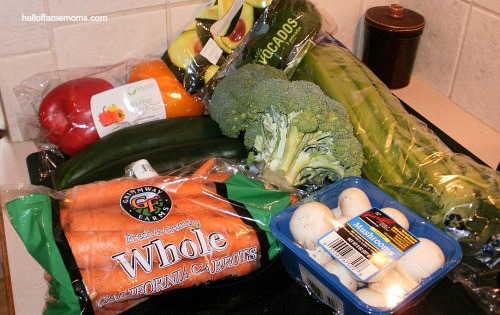Winter is in full swing, which makes health-conscious, natural-food-lovers’ shopping trips a little more complicated than in the other three seasons where there tends to be a larger selection of the well-known fruits and vegetables.
We all love good, clean, natural cuisine, but as the days shorten, so does our list of year-round possibilities – unless you have an unlimited grocery budget.
Organic and locally-grown produce are a priority for many kitchens, but they often become a luxury this time of the year. For most of us, the cost is a big factor in determining what ends up in our grocery cart – we buy what is on sale and when it comes to fruits and vegetables, above all else, we buy what is in season.
Aside from the traditional holiday meals and hot soups, most of us cook many of our favorite dishes year around, and while it may make our taste buds happy, our wallets could be crying in secret.
There are many benefits to eating “in-season.”
Seasonal produce is not only fresh, but it also tastes better and retains more of its nutritional value than produce that has been in cold storage. Eating seasonal foods also fulfills the seasonal needs of the human body – we need different vitamins, minerals and antioxidants at different times of the year to help ward off infection and keep us feeling our best. Lastly, but what will prove the most influential for many, is the financial benefit of seasonal foods – expect to pay at least 20% less when buying in-season.
So, how does one go about selecting delicious recipes to use in winter and which are best left until summer and autumn?
Your local farmer’s market will generally be stocked with in-season fruits and vegetables – although some entrepreneurial growers will offer non-seasonal items, so it is best to be informed.
Whether you are shopping at the local market or the supermarket, plan your menu for the week using the in-season produce guide below and be sure to make a complete shopping list!
Year-round options
These are generally found year-round and nationwide; some may be cold storage. Each will also be specified in its “official” in-season month(s).
- Fruits: apples, lemons, *avocado (technically a Berry), *tomatoes, *bananas
- Vegetables: Beets, potatoes, broccoli, carrots, cabbage, fennel, cauliflower, leeks, onions, mushrooms, arugula, radishes, scallion, celery, shallots and spinach.
January
- Fruits: oranges, papayas, grapefruit, tangelos, lemons, tangerines
- Vegetables: cabbages, cauliflower, leeks, broccoli
February
- Fruits: grapefruits, papayas, lemons, oranges
- Vegetables: cauliflower, broccoli
March
- Fruits: mangoes, pineapples
- Vegetables: broccoli, lettuce
April
- Fruits: mangoes, pineapples
- Vegetables: zucchini, artichokes, rhubarb, broccoli, asparagus, lettuce, spring peas
May
- Fruits: pineapples, apricots, cherries
- Vegetables: asparagus, spring peas, zucchini, okra, artichokes, rhubarb, broccoli, lettuce
June
- Fruits: strawberries, watermelon, apricots, peaches, cantaloupe, cherries, blueberries
- Vegetables: lettuce, corn
July
- Fruits: cantaloupe, watermelon, strawberries, kiwi, blueberries, peaches, plums, raspberries, apricots, tomatoes
- Vegetables: summer squash, cucumbers, green beans, lettuce, corn
August
- Fruits: strawberries, kiwi, watermelon, plums, blueberries, cantaloupe, peaches, apricots, raspberries, tomatoes
- Vegetables: green beans, eggplant, lettuce, corn, cucumbers, summer squash
September
- Fruits: pomegranates, grapes, tomatoes
- Vegetables: lettuce, pumpkins, spinach, eggplants
October
- Fruits: apples, grapes, cranberries, pomegranates
- Vegetables: spinach, winter squash, sweet potatoes, broccoli, lettuce, pumpkins
November
- Fruits: tangerines, pears, oranges, pomegranates, cranberries
- Vegetables: winter squash, mushrooms, spinach, sweet potatoes, broccoli, pumpkins
December
- Fruits: papayas, grapefruit, pomegranates, oranges, tangerines, pears
- Vegetables: mushrooms, broccoli, cauliflower, sweet potatoes
This guest post was contributed by Stephanie Lynch, a freelance writer and a stay at home mom. She designed Howmuchisit, a database designed to help the everyday consumer find out what unknown things cost in life.









